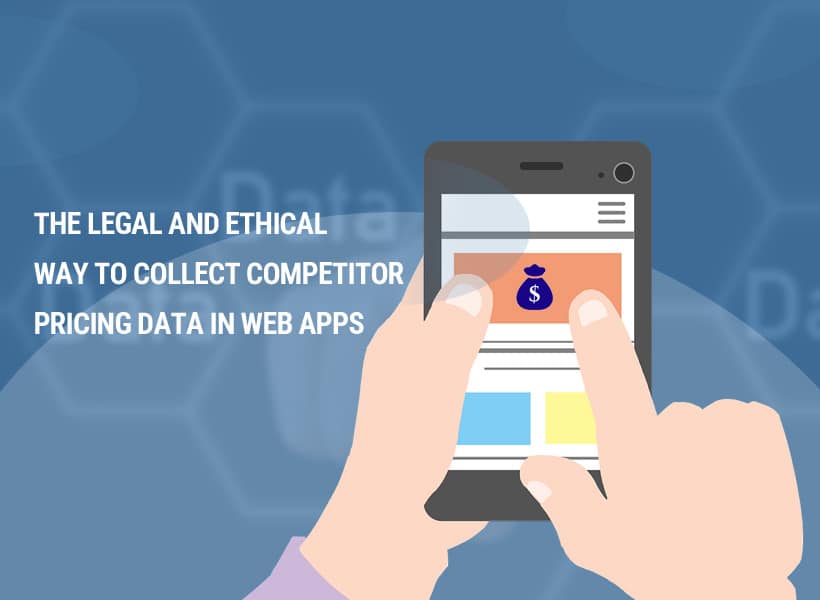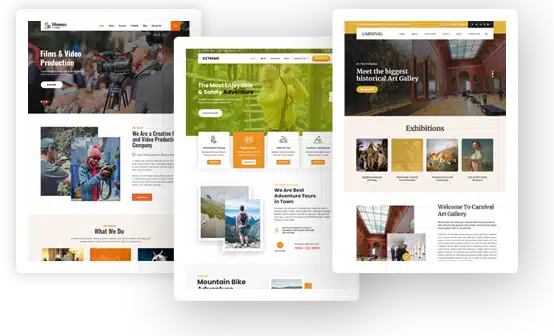The legal and ethical way to collect competitor pricing data in web apps

In today’s fast-paced online markets, staying competitive often comes down to knowing how your pricing stacks up. For developers and product teams building pricing intelligence tools, competitor pricing data is a cornerstone. But collecting that data isn’t as simple as firing up a script and scraping product pages. The line between what’s technically possible and what’s legally or ethically acceptable can be thin—and crossing it can mean more than just a broken crawler.
Understanding how to legally and ethically gather competitor pricing data is crucial for creating trustworthy, sustainable software solutions. This article explores what developers need to know about the rules of the road—before they start mining for prices.
Why competitor pricing data matters
For pricing managers, marketers, and retailers, competitor pricing data is like fuel. It powers pricing algorithms, influences promotions, and reveals gaps in the market. Developers are the ones who enable access to that data, whether by integrating APIs, building custom scrapers, or architecting pricing dashboards.
But because this data comes from external sources—often websites that don’t explicitly offer it for third-party use—developers are also the ones who shoulder the responsibility of how it’s collected. That’s where understanding the legal frameworks, site-level permissions, and ethical expectations becomes essential.
Reading the fine print: robots.txt and terms of service
The first stop when building a scraper or data collector should always be the site’s robots.txt file. This file, usually found at the root of a website, outlines which parts of the site are off-limits to automated crawlers. While robots.txt is not legally binding in every jurisdiction, it is considered a standard of web etiquette—and ignoring it can quickly lead to blocked IPs or worse, cease-and-desist letters.
Even more important are the website’s terms of service. Some sites explicitly prohibit scraping in their terms, making unauthorized data collection not just bad practice but potentially illegal. Developers should work closely with legal teams to interpret these terms and document compliance. If a pricing data strategy involves websites that forbid scraping, alternative methods like partnerships or APIs must be considered.
Scraping vs. api access: choose the right tool
Many companies offer public or commercial APIs specifically for retrieving competitor pricing data. These APIs are often more stable and efficient than scraping, and using them supports a data-sharing relationship based on consent. For example, marketplaces or retailers may expose product pricing through APIs designed for affiliates or aggregators.
Scraping, while often more flexible, carries greater risk. Not only can websites change their structure without notice (breaking scrapers instantly), but scraping also consumes server resources, which can be interpreted as hostile if done at scale. When scraping is necessary, developers should throttle requests, respect crawl-delay rules, and cache data to minimize server impact.
Combining both approaches can sometimes be the best route. Use yahoo finance api where available, and fall back on lightweight scraping only when truly needed. This hybrid model supports both reliability and ethical responsibility.
Geo-specific compliance: the GDPR question
If you’re collecting competitor pricing data that includes any form of personal information—such as user reviews tied to real identities—you’ll need to consider regional data protection laws like the GDPR in Europe or the CCPA in California. Even if the pricing data seems purely commercial, attaching it to behavioral or identifiable patterns can introduce privacy issues.
In most cases, basic pricing information scraped from public pages doesn’t qualify as personal data. But developers should still take care not to store or process more information than necessary. Data minimization is both a legal principle and a smart engineering practice.
Designing responsible data pipelines
A responsible data pipeline starts with intent. Ask: why are we collecting this pricing data, and how will it be used? Then build the pipeline to match that intent. Limit the scope of data fields, and avoid scraping full pages when only a handful of attributes are relevant.
Consider transparency as well. Internal documentation should explain how pricing data is collected, what tools are used, and what safeguards are in place. If the organization ever faces scrutiny, being able to demonstrate deliberate, informed decisions can make a huge difference.
Automated monitoring systems should also be in place to detect when a site’s structure changes or when terms of service are updated. This can prevent a once-compliant scraper from quietly becoming non-compliant over time.
The ethics of automated data collection
Beyond legality, there’s the ethical dimension. Collecting competitor pricing data without causing harm means considering the impact on the target site. Does your crawler overload servers? Are you using hundreds of proxy servers to bypass rate limits? Are you mimicking human behavior to avoid detection? These are red flags not just technically, but ethically.
Developers should aim for clarity and fairness. Identify your bot with a user-agent string. Respect rate limits. Avoid cloak-and-dagger techniques unless the data is public and the need is critical. These practices signal integrity, which in turn supports long-term sustainability of the tool you’re building.
Another ethical consideration is reciprocity. Some platforms offer data in exchange for data. Participating in pricing data co-ops or intelligence platforms can provide access while maintaining transparency and legal clarity. It’s worth exploring if you’re frequently bumping into blocked endpoints or grey areas.
Educating the wider team
Often, the technical folks understand the risk, but the pressure to deliver pricing insights comes from outside teams—marketing, product, or sales. That’s why developers should advocate for responsible pricing data strategies early. Bring up legal reviews during project planning. Offer alternatives to scraping. Highlight the long-term value of sustainable data sources over quick hacks.
You don’t need to be a lawyer to raise a red flag. Just explain what the risks are, and what the better path might be. If your competitor pricing data system goes down or gets blacklisted, that impacts everyone.
The evolving landscape of pricing data access
As more organizations recognize the value of competitor pricing data, the methods to access it are evolving. Browserless scraping services, headless crawlers, machine learning for content recognition—all of these are reshaping how data is gathered. But as tools get more advanced, so do the countermeasures.
Websites now use CAPTCHAs, dynamic JavaScript rendering, and legal enforcement to push back. Developers need to keep up not just technically, but also ethically. The better path isn’t necessarily finding new ways to hide your bot, but finding better ways to align with the rules.

